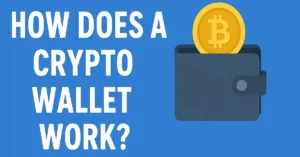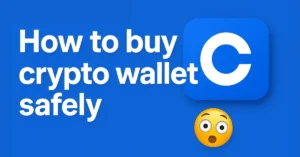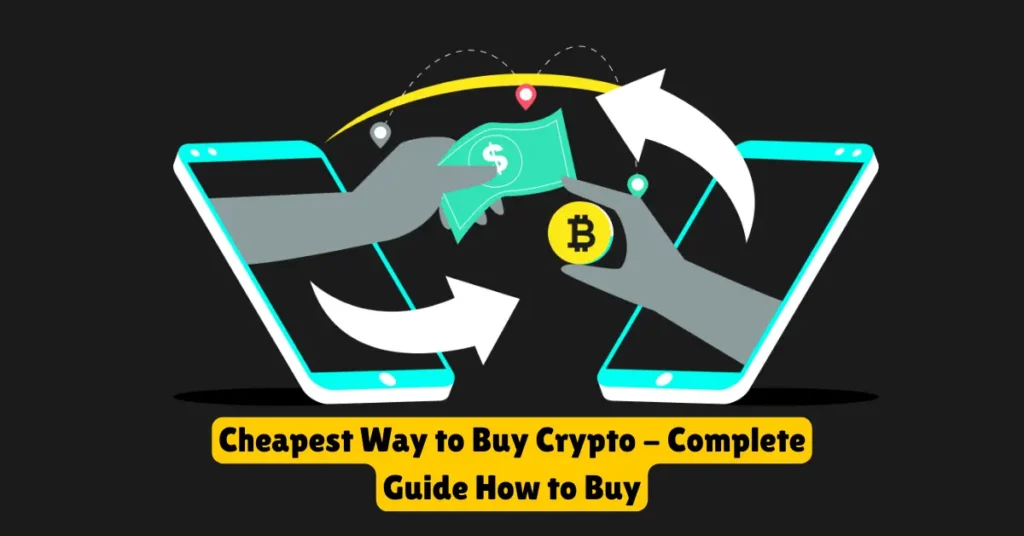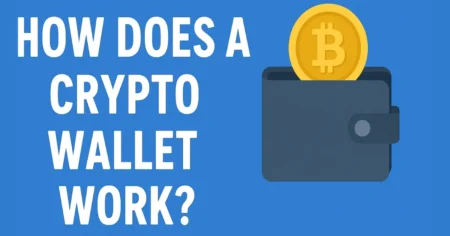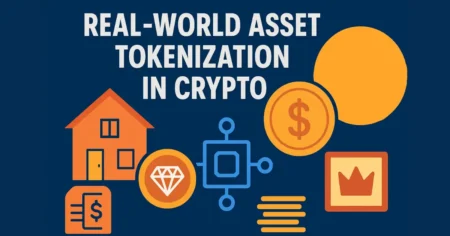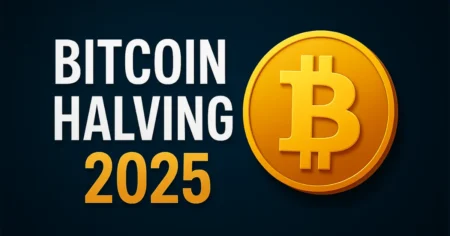Cheapest way to buy crypto
Introduction to Buying Crypto Cheaply
Let’s face it—buying cryptocurrency can sometimes feel like an expensive game. You spot the perfect entry point, hit the “buy” button, and suddenly there’s a chunk missing from your wallet—thanks to fees, slippage, or inflated prices. But it doesn’t have to be that way. The truth is, if you’re strategic, you can significantly reduce the costs of buying crypto. I’ve done it myself. The trick lies in knowing where to look, which methods to use, and which platforms offer real value without depleting your funds.
Understanding how to buy crypto cheaply isn’t just about finding the lowest price—it’s about optimizing every part of the buying process. From choosing the right exchange to using stablecoins wisely and avoiding sneaky fees, every step matters. Whether you’re a newbie stepping into the world of digital assets or a seasoned trader aiming to cut costs, this guide will break everything down in simple, actionable terms.
We’ll explore different platforms, compare fees, explain transaction types, and even share personal experiences that saved hundreds in fees. If you’ve ever felt frustrated with how much you’ve paid just to get some crypto in your wallet, keep reading—this blog is written for you.
Factors That Affect Crypto Buying Costs
Buying crypto isn’t just about the price of the coin. Several hidden factors sneak into the equation, silently increasing your costs. Understanding these is the first step toward slashing your expenses.
Exchange Fees and Hidden Charges
Every exchange generates revenue through fees—some are transparent, while others are not. Most centralized platforms (like Binance or Coinbase) charge a flat trading fee or a percentage based on your transaction volume. While 0.1% might not sound like much, when you’re dealing with large amounts or frequent trades, it adds up quickly.
But the real kicker? Hidden fees. These come in the form of spread markups (the difference between the buy and sell price), withdrawal charges, or even deposit fees, depending on your payment method. I once lost $15 on a $500 deposit because of a credit card fee—not ideal.
Payment Methods and Their Impact on Fees
How you pay can dramatically change how much you end up spending. Bank transfers usually have the lowest fees, especially if the exchange supports ACH or SEPA. Credit and debit cards? They’re fast but often carry hefty charges (3-5% is common). PayPal and third-party gateways can also bite into your funds with processing fees and unfavorable currency conversions.
For example, buying $100 worth of crypto via PayPal could end up costing $107 after all the charges. If you’re not paying attention, you’re throwing money away.
Network Congestion and Gas Fees
If you’re buying crypto on-chain, especially Ethereum-based tokens, gas fees are something to watch. These are the costs associated with processing your transaction on the blockchain. When the network is busy, these fees can skyrocket. I’ve personally paid over $60 in gas fees for a $100 transaction—never again!
Using chains like Binance Smart Chain (BSC) or Solana can help, as their fees are significantly lower. Better yet, use Layer 2 solutions or exchanges that handle the heavy lifting off-chain.
Best Low-Cost Crypto Exchanges
The platform you choose plays a massive role in how much you pay. Some are notorious for high fees, while others pride themselves on affordability. Let’s break down a few options I’ve tested myself.
Binance – The Global Leader with Minimal Fees
Binance is hands down one of the cheapest options out there. With trading fees as low as 0.1%, and even lower if you use their native token (BNB) for fees, it’s a go-to platform for cost-conscious buyers. I’ve consistently saved up to 25% on trading fees just by toggling that “Use BNB for Fees” option.
They also offer zero-fee trading pairs during promotional periods. Add to that a robust P2P platform and the ability to fund your account via bank transfers with minimal cost—Binance makes buying crypto on a budget super accessible.
KuCoin – Low Trading Fees and Promotions
KuCoin is another exchange that impressed me with its low fees. They offer spot trading fees of 0.1% but frequently run promotions that cut those fees in half. If you’re okay with a slightly less polished interface than Binance, KuCoin delivers serious bang for your buck.
They also support a wide range of crypto assets and provide bonus tokens for new users. I once got $10 in USDT just for completing a few trades!
Coinbase Pro vs Coinbase – What’s Cheaper?
Most beginners start with Coinbase, but their fees are steep. What many don’t know is that Coinbase Pro (now integrated into the main app under “Advanced Trade”) offers a more cost-effective way to buy crypto. The interface might look intimidating at first, but once you get the hang of it, the savings are real.
For example, while Coinbase can charge up to 4% for credit card purchases, Coinbase Pro charges as low as 0.5% for trades. That difference alone is enough to switch if you’re serious about saving money.
Peer-to-Peer (P2P) Platforms – A Hidden Gem
When it comes to cutting out the middleman and buying crypto directly from others, P2P platforms shine. I’ve used them multiple times—especially when bank transfers weren’t an option—and the savings were undeniable.
How P2P Crypto Buying Works
In a P2P setup, you’re buying crypto directly from another person using payment methods you both agree on—bank transfer, mobile wallet, or even cash. Platforms like Binance P2P, Paxful, and LocalBitcoins act as the middleman only for escrow, keeping both parties safe.
You can often find rates cheaper than the market price, especially in regions with high demand or limited exchange access. The best part? No extra trading fees. The only cost might be your payment method (if any).
Best P2P Platforms for Cheap Crypto
Binance P2P – Integrated into the Binance app, this one’s my favorite for sheer variety and security.
- Paxful – Great for global users and tons of payment methods.
- LocalBitcoins – Still widely used in certain countries, though not as modern.
I once got Bitcoin 2% below market value on Paxful—just by being online when someone wanted to sell quickly. It’s a game of timing and trust, but when done right, it’s incredibly cost-effective.
Using Decentralized Exchanges (DEXs) Wisely
Decentralized exchanges (DEXs) offer a whole different ballgame when it comes to buying crypto. While they might not always be the cheapest option, if used correctly, they can help you avoid many of the centralized exchange fees and give you more control over your transactions.
Pros and Cons of DEXs for Cheap Buys
Let’s start with the pros: DEXs don’t require registration, and most don’t charge account or deposit fees. You connect your wallet, make the swap, and boom—you’re done. That simplicity can save money and time. Since you’re transacting directly with smart contracts, no middleman is taking a cut.
However, the downside is that you often pay higher gas fees (especially on Ethereum-based DEXs like Uniswap). I once paid nearly $40 just to swap ETH for a stablecoin during peak hours. It stung.
That said, newer networks like Arbitrum, Optimism, and Polygon are making DEX usage much more affordable. I’ve used Uniswap on Arbitrum, and the gas fees were under $0.50—a total game-changer.
When Is a DEX Better Than a CEX?
If privacy is your top concern, or you’re trading lesser-known tokens not listed on big exchanges, DEXs win hands down. They also work great when you’re using Layer 2 networks, where fees are negligible. Plus, since there’s no KYC, you skip the whole identity verification process, which can be a hassle.
DEXs are also better if you’re planning to stake or yield farm immediately after buying your tokens—everything can be done from the same wallet, without transferring funds between platforms.
Strategies to Reduce Crypto Buying Costs
So, how do you save money when buying crypto? It’s not just about where you buy, but how, when, and with what. Small strategic choices can lead to big savings over time.
Buying During Off-Peak Hours
This one’s often overlooked. Blockchain networks like Ethereum and Bitcoin get clogged during peak hours, typically weekdays, midday UTC. That’s when miners charge higher gas fees due to higher demand.
I always aim to buy during late-night or early-morning hours UTC to avoid congestion. On average, I save between 20–40% on gas just by timing my purchases better. Most networks experience lighter activity during weekends, too, which can lead to faster and cheaper transactions.
Choosing the Right Crypto Pairs
Not all trading pairs are created equal. Some pairs come with higher liquidity and lower spreads. For example, BTC/USDT or ETH/USDC often have the tightest spreads and lowest slippage compared to altcoin-to-altcoin swaps.
A few months ago, I tried swapping ADA to SOL directly and paid a hefty spread. Had I gone from ADA → USDT → SOL, the total fees would’ve been lower. It pays to compare routes before confirming a trade.
Avoiding High-Fee Payment Options
Credit cards, PayPal, and third-party wallets often carry fees ranging from 3% to 7%. Even though they’re convenient, they’re rarely worth it if you’re aiming to keep costs low.
I prefer ACH (in the U.S.) or SEPA (in the EU) bank transfers. They’re slower but significantly cheaper. In some cases, using crypto you already own to buy another via trading pairs is even better—zero fiat involved.
Using Stablecoins for Lower Entry Fees
Stablecoins like USDT, USDC, and BUSD are not just useful for parking funds—they can also make buying into crypto much cheaper. Many exchanges charge lower fees for converting stablecoins into other cryptos compared to using fiat directly.
Buying USDT or USDC First – Then Converting
This is my go-to strategy. Rather than buying Bitcoin or Ethereum straight with a debit card (which costs 3–5% in fees), I first purchase USDT via bank transfer—almost fee-free—and then trade it on a platform like Binance or KuCoin.
The savings are incredible. I once bought $500 worth of ETH directly and lost $25 in fees. When I switched to buying $500 in USDT first and then trading it for ETH, my total cost was under $5. That’s a $20 difference on one purchase!
Why Stablecoins Make Entry Cheaper
Stablecoins are highly liquid, and most exchanges treat them like native currencies. They’re used as base pairs, meaning trading into and out of crypto is more seamless and carries lower fees. Plus, they’re easy to move across networks with low fees, especially on blockchains like Tron or BSC.
Some platforms also offer promotions or rebates when you use stablecoins for trades. That’s a nice bonus if you’re doing frequent transactions.
Spot vs. Market Orders – Which Saves More?
Order type matters more than you think. The two most common types—market and limit (or spot) orders—have very different fee implications.
Benefits of Limit Orders for Cost Saving
Limit orders let you set a specific price at which you want to buy or sell. If the market hits that price, your order is executed. Most platforms reward these types of trades with lower fees because you’re providing liquidity.
On Binance, for example, taker fees (market orders) are 0.1%, while maker fees (limit orders) are 0.075%. That might not sound like a lot, but over time and larger amounts, it adds up fast.
I always use limit orders for planned buys. I set the price slightly below the current market rate and wait. More often than not, it hits. Not only do I get a better entry, but I also pay less in fees.
How Market Orders Can Drain Your Wallet
Market orders are executed immediately at the best available price. Sounds good, right? Not always. If liquidity is low or the order book is thin, you could pay more than you intended.
A few weeks back, I used a market order to buy a lesser-known altcoin. The slippage cost me an extra 3%. Had I waited and used a limit order, I would’ve saved that money and gotten a better deal.
In short, market orders are fine for speed, but limit orders are where the savings lie.
Avoiding High Gas Fees on Ethereum
Gas fees on the Ethereum network are infamous for eating into your crypto investments. If you’ve ever tried to buy a token and saw a $50+ fee just to process your transaction, you’re not alone—I’ve been there, and it’s painful. But there are smart ways to sidestep these costs without compromising on security or speed.
Layer 2 Solutions Like Arbitrum and Optimism
One of the most effective ways to dodge high Ethereum gas fees is to use Layer 2 solutions. These are networks built on top of Ethereum that handle transactions off-chain and settle them on-chain, drastically reducing fees and speeding up confirmation times.
Arbitrum and Optimism are two of the most popular options. I’ve used both, and they work seamlessly with platforms like Uniswap and Sushiswap. For example, a transaction that would cost $30 on the Ethereum mainnet might only cost $0.25 on Arbitrum. That’s a massive difference, especially when you’re moving smaller amounts.
To get started, you simply bridge your ETH to a Layer 2 network using tools like the Arbitrum Bridge or Optimism Gateway. From there, everything feels the same—except your wallet isn’t getting drained with every click.
Using Binance Smart Chain for Lower Fees
Another smart move? Switch to Binance Smart Chain (BSC). The BSC ecosystem mimics Ethereum in functionality but is way cheaper in terms of gas. I once swapped tokens on PancakeSwap (a popular DEX on BSC) and paid less than $0.10 in fees.
BSC is supported by most wallets like MetaMask, and its transaction times are fast, usually seconds. It’s a great alternative when Ethereum is congested or simply too expensive. While it may not have the same level of decentralization, it’s perfect for budget-conscious buyers looking to stretch every dollar.
Local Crypto Buying Tactics
Not everyone wants to use an exchange—sometimes the cheapest (and fastest) way to buy crypto is right in your backyard. Local crypto buying methods offer flexibility, privacy, and occasionally, even better rates.
LocalBitcoins, Paxful, and Other Options
Platforms like LocalBitcoins, Paxful, and HodlHodl connect local buyers and sellers directly. You can often negotiate prices and use familiar payment methods like bank transfer, mobile money, or even cash in person.
These platforms also allow you to see seller ratings, trade history, and online status, so you know who you’re dealing with. I once bought $300 worth of Bitcoin in a matter of minutes using Paxful via bank transfer, and the price was better than what was available on exchanges.
Negotiating Direct Deals
If you have trusted contacts who hold crypto, negotiating direct purchases can be the cheapest route—no exchange fees, no gas, no middleman. It’s all about trust and timing.
In local crypto groups (like WhatsApp or Telegram), I’ve found people willing to sell at competitive rates just because they needed cash urgently. Just remember to use an escrow service or meet in a secure environment if you’re dealing in person.
The key to success here is community involvement. The more you engage with local crypto enthusiasts, the more opportunities you’ll find to buy crypto at a discount or without paying extra fees.
Mobile Apps with the Lowest Fees
If you prefer managing your crypto on the go, some mobile apps offer incredibly low fees while maintaining a user-friendly experience. The right app can save you both time and money without compromising security.
Crypto.com – Rewards and Low Fees
Crypto.com’s mobile app is one of the best I’ve used. Not only do they have competitive trading fees (starting at 0.4% and dropping as you trade more), but they also offer cash-back rewards when using their Visa card and bonuses for staking their CRO token.
I regularly use their app to buy stablecoins via bank transfer—no fees at all. Then I trade them for Bitcoin or Ethereum inside the app. The interface is sleek, and everything is designed to help users maximize their gains.
One feature I love is their “Recurring Buy” option—it allows me to automate crypto purchases at low cost, dollar-cost averaging into positions without thinking about it.
Trust Wallet – Buying from the App Cheaply
Trust Wallet has also stepped up its game. It now allows users to buy crypto directly within the app using third-party services like MoonPay, Ramp, and Mercuryo. While these providers sometimes charge processing fees, Trust Wallet itself doesn’t add any markup.
If you use a bank transfer or select the right provider, you can often find lower fees than centralized exchanges. Plus, since the crypto goes straight to your wallet, there’s no withdrawal fee.
And here’s a neat trick: if you buy USDT on a cheaper network (like BSC), you can then swap it inside Trust Wallet for your desired token, saving both on buying and trading costs.
Tips to Avoid Scams While Buying Cheap Crypto
Buying crypto cheaply can expose you to shady deals and outright scams. If something seems too good to be true, it probably is. Staying safe is just as important as saving money.
Common Red Flags in Cheap Crypto Offers
Over the years, I’ve seen it all—fake sellers, phishing links, manipulated screenshots, and more. Here are a few red flags:
Prices way below market value: If someone offers Bitcoin at 20% off, walk away.
- No escrow: Always use platforms that hold funds until both sides confirm.
- Unverified users: Avoid sellers with no trade history or reviews.
- Pressure to act fast: Scammers often create urgency to make you act without thinking.
I once almost fell for a scam where a seller asked for upfront payment without escrow. Thankfully, I paused to do a quick profile check and realized they had zero verified trades—bullet dodged.
Ensuring Safe Transactions in P2P
Stick with reputable P2P platforms that use escrow and have active support channels. Always verify the other party’s reputation and never take conversations off-platform until after the deal is done.
Use wallets and apps that notify you immediately upon receiving crypto. Double-check transaction IDs, and never share sensitive info like seed phrases or passwords.
Your best weapon against scams? Patience and research. Always double-check the platform, the deal, and the person you’re dealing with.
Tax Implications of Buying Crypto Cheaply
One area most people overlook is taxes. But here’s the thing—even if you buy crypto for cheap, you need to track it correctly for tax purposes. The lower your entry price, the more accurate your capital gains reporting must be.
Tracking Your Purchase Prices
Every time you buy crypto, make a note of:
- The amount of crypto
- The price you paid in fiat
- The date and time
- The platform used
- The transaction fees
I use a spreadsheet and also plug everything into a crypto tax tool like Koinly or CoinTracker. When it comes time to report taxes, you’ll thank yourself.
Failing to track these details can lead to misreported gains—or worse, overpaying your taxes. I once missed logging a small trade and had to guess my entry price months later. Never again.
Why Low Purchase Costs Help with Taxes
If you buy crypto at a lower price, your gains when selling could be higher, but they’re easier to track. More importantly, understanding your entry point lets you plan tax-saving strategies like harvesting losses, long-term holding, and more.
Proper documentation can also help prove the origin of your crypto in case of audits or legal questions. It’s not the most exciting part of crypto trading, but it’s vital if you want to keep things clean.
Case Study: My Personal Experience Buying Bitcoin Cheaply
Let me walk you through how I bought Bitcoin at the lowest possible cost, using a combination of strategies discussed above. Not only did I save over $200 in fees, but I also gained a better understanding of how to stretch my crypto budget further.
How I Saved Over $200 in Fees
- It started with a simple goal: Buy $5,000 worth of Bitcoin without getting slammed by exchange fees, network costs, or poor conversion rates. Here’s the step-by-step approach I took:
- Avoided credit cards: I skipped using debit or credit cards, which would’ve added an automatic 3.5–4% fee right off the bat. That alone saved me nearly $200.
- Used bank transfer (ACH): I deposited USD to Binance via bank transfer—completely free.
- Bought USDT first: Instead of purchasing BTC directly, I first bought USDT, which allowed me to take advantage of a lower trading fee tier.
- Waited for a dip: I monitored the market and set a limit order slightly below the current price. This strategy helped me enter the market at a better price with less slippage.
- Paid fees with BNB: By using Binance Coin (BNB) to pay for trading fees, I got a 25% discount on the trading fee.
The final result? I ended up with more BTC in my wallet than I would have using standard “buy now” methods on other platforms like Coinbase or Kraken. Not only was it cheaper, but I felt in control of every step.
Tools and Tactics I Used
- CoinMarketCap to check real-time prices across platforms.
- Binance Fee Calculator to estimate the total cost before placing orders.
- MetaMask for monitoring my crypto wallet.
- Google Sheets to track my purchases, prices, and fees.
I learned that patience and planning pay off in the crypto world. Most people overpay out of urgency. But when you take a step back and analyze your options, the savings are significant and recurring.
Conclusion
Buying crypto doesn’t have to drain your wallet. By combining smart strategies, choosing the right platforms, and avoiding common traps, you can consistently buy crypto at the lowest possible cost.
From using low-fee exchanges like Binance and KuCoin to embracing P2P trading and stablecoins, there are plenty of ways to beat the system legally and effectively. It’s all about doing your homework, tracking your transactions, and staying ahead of fee hikes and market tricks.
Remember, you’re not just buying digital coins—you’re investing in a smarter financial future. And the more intentional you are with your approach, the more value you’ll extract from every transaction.
So next time you’re ready to buy Bitcoin or any other crypto, don’t just click “Buy Now.” Think it through, consider your options, and go the cheapest route possible. Your future self—and your wallet—will thank you.
FAQs
What is the cheapest way to buy Bitcoin?
The cheapest way is usually through a reputable exchange like Binance using a bank transfer, then trading stablecoins (like USDT) for Bitcoin. You’ll avoid credit card fees, reduce trading costs, and maximize your returns.
Are P2P platforms safe for buying crypto?
Yes, as long as you use platforms with strong escrow systems like Binance P2P or Paxful. Always check user reviews and avoid deals outside of the platform to stay safe.
Which crypto exchange has the lowest fees?
Binance and KuCoin consistently rank among the lowest-fee exchanges. Binance, in particular, offers additional discounts when paying fees with its native token (BNB).
Can I buy crypto without paying any fees?
While it’s tough to avoid all fees, you can drastically minimize them by using bank transfers, stablecoin trading, and fee discount programs offered by exchanges.
What payment method is cheapest for buying crypto?
Bank transfers (like ACH or SEPA) are usually the cheapest. Avoid credit cards and PayPal due to their high processing fees.
Also, read
- What is a Crypto Wallet and How Does It Work? – Coinsify
- 10 Crypto Terms Every Beginner Must Know – Coinsify
- What is Blockchain Technology – Complete Guide – Coinsify
- How to Buy Crypto Safely in 2025 – Complete Guide – Coinsify
- Bitcoin vs Ethereum: Key Differences Explained – Complete Guide
- Ultimate Blockchain Glossary: Learn Blockchain Terms Easily
- How to Buy Bitcoin Safely (Complete Beginner’s Guide)
- Top 10 Crypto Wallets for Beginners (2025 Edition)
- What is Cryptocurrency? A Beginner-Friendly Guide (2025)
